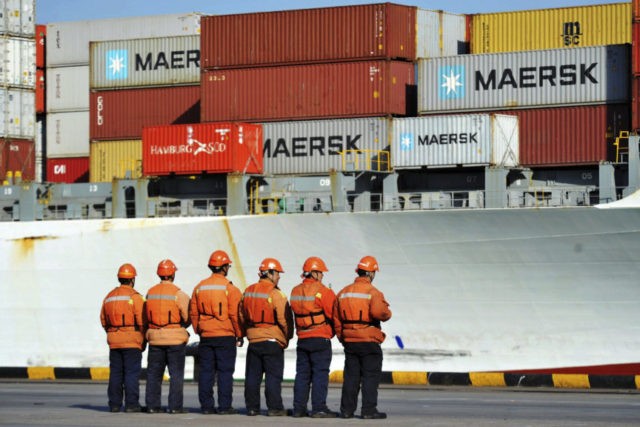Vatican Cardinal Peter Turkson criticized the shipping industry Sunday, claiming that “vessels produce carbon dioxide emissions that significantly contribute to global climate change and acidification.”
In his message for the yearly celebration of “Sea Sunday,” Turkson, head of the Vatican’s Department for Integral Human Development, first seemed to praise the work of seafarers before blaming them for their role in aggravating “global warming.”
Turkson recalled the sacrifice of seafarers who often live for months at a time in a confined space, “away from their families and loved ones missing the most important and meaningful events in their families (birthdays’, graduations, etc.) and failing to be present during times of trials and difficulties such as sickness and death.”
He went on to express his gratitude for all those who make their living on the seas, noting that seafarers “play a significant role in our global economy by transporting from one corner of the world to another 90% of all the goods we use in our daily life.”
The Ghanaian cardinal’s tone shifted from praise to reproach, however, when speaking of seafarers’ role in “climate change.”
“Like all types of transportation that use fossil fuels, vessels produce carbon dioxide emissions that significantly contribute to global climate change and acidification,” the cardinal declared. “Besides carbon dioxide ships also release a handful of other pollutants that contribute to the problem.”
In speaking of “other pollutants” besides carbon dioxide, Turkson fell into the common error of our time of imagining carbon dioxide to be a “pollutant.”
Carbon dioxide (CO2) is an odorless, colorless, non-toxic gas essential to the welfare of the earth’s biosphere. By definition, a pollutant is a foreign substance or condition that contaminates air, water, or soil, whereas carbon dioxide is an essential component of the air we breathe, necessary for the health and survival of plant life.
Calling CO2 an air pollutant is like calling oxygen a “water pollutant.”
While there has never been a single documented case of a person being killed by carbon dioxide related “global warming,” real pollution of air, water and land is killing an average of 25,000 people every day across the globe.
In 2017 study, the prestigious, UK-based Lancet journal revealed that pollution, not CO2, is the “largest environmental cause of disease and death.”
Pollution-related diseases were responsible for an estimated 9 million premature deaths in 2015, or some 15 times more than from all wars and other forms of violence combined, the Lancet found.
Pollution is not only the largest environmental cause of disease and premature death in the world today, the Lancet study found, but diseases caused by pollution were responsible for roughly 16 percent of all deaths worldwide—“three times more deaths than from AIDS, tuberculosis, and malaria combined and 15 times more than from all wars and other forms of violence.”
Air pollution is measured by the presence of harmful foreign substances in the air that can cause disease and even death in human beings and other aerobic organisms.
The World Health Organization (WHO), for instance, measures air pollution by the mean annual concentration of fine suspended particles of less than 2.5 microns in diameter. These are the particles that cause diseases of all sorts and are responsible for most deaths by air pollution.
According to the WHO, exposure to particulate matter increases the risk of acute lower respiratory infection, chronic obstructive pulmonary disease, heart disease, stroke and lung cancer.
In its most recent report, the WHO analyzed the “annual median concentration of particulate matter with an aerodynamic diameter of 2.5 μm or less (PM2.5) for both urban population and rural and urban population” and found that the United States was one of the most pollution-free nations in the world.
The annual mean concentrations of particulate matter in the air range from less than 10 to over 100 µg/m3, the report states. At the very low end of the spectrum, the United States has a concentration of just 8, while China has a concentration more than seven times higher at 59, India at 66, Egypt at 101 and Saudi Arabia with the worst air pollution at 127.
Nowhere in the report was carbon dioxide mentioned, for the simple reason that carbon dioxide is not a pollutant.
Follow Thomas D. Williams on Twitter Follow @tdwilliamsrome

COMMENTS
Please let us know if you're having issues with commenting.